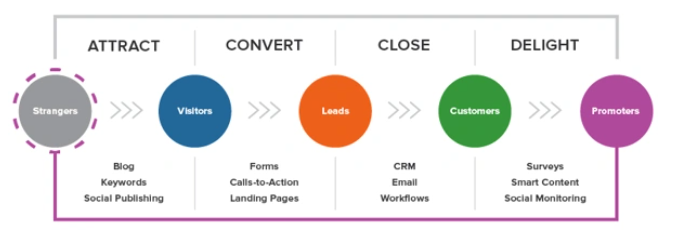Improving Team Communication in Remote Software Development
Team communication in distributed software development is the lifeline that keeps projects from sinking into the abyss of confusion and delays. Obviously, when your team is scattered across different time zones and coffee schedules, there is a big need for clear and consistent communication. It is basically the glue that holds everything together so it doesn’t fall apart. Only effective communication bridges the geographical divide and transforms a scattered group of individuals into a cohesive unit.
Thanks to the right communicative strategies, professionals can deliver outstanding results and job satisfaction. It essentially helps synchronize everyone’s clocks and make sure deadlines are clear, meetings are productive, and no one’s left working when they should be sleeping.

Image Source: Freepik
One of the Effectiveness Factors
No doubt, the world of distributed software development is super intricate. So in this realm, mastering the art of team communication sets the stage for another crucial performance: navigating the world of pull requests, PR in software development, and git code review. It sounds complicated, doesn’t it? But the truth is that these tools and processes are not another type of technical formalities.
Any IT expert would confirm that they're the gears that keep the machinery of collaborative coding running smoothly. When a developer initiates a pull request, they invite the team into a constructive dialogue. In this scenario, they also spark a process where PR in software development becomes a focal point for collaboration, feedback, and refinement.
This step is where the collective intelligence of the team finally shines and promises great results. It's a moment where communication transcends daily updates and stand-ups. It gives you a chance to dive deeper into the code itself to make sure it has excellent quality, consistency, and innovation. In this dance, every pull request, every code review, is a step toward perfection, guided by the rhythm of open, constructive team communication.
The Challenges of Remote Collaboration
Distributed software development teams face a unique set of communication difficulties. Unfortunately, those can make the smooth sailing of projects feel more like navigating through a storm.
Time Zone Tangles
When your team spans the globe, finding a time when everyone’s awake, let alone alert, can be a Herculean task. This time zone tango often leads to delays in responses, which is not the best thing for high results. On top of that, it evokes difficulty scheduling meetings that everyone can attend.
Lost in Translation
Without the nuances of face-to-face communication, messages can get lost in translation. Everyone of us has experienced situations when our text messages were misinterpreted, do you remember those? The truth is that text-based communication lacks tone and body language. As a result of this, we can witness misunderstandings or, worse, conflicts that could have been avoided with a simple in-person chat.
Overload and Isolation
Emails. Chats. Video calls. Repeat. The flood of digital communication can be overwhelming, especially for those who are very sensitive to information. Eventually, we can see information overload for some team members, while others might feel isolated from the loop, missing out on crucial updates or discussions. Such a disbalance can be detrimental to success.
Despite these challenges, teams can overcome them with the right strategies, tools, and a commitment to clear, consistent communication. Let’s talk about those in more detail.
Enhancing Team Communication in Distributed Software Development

Image Source: Freepik
Here, we demand a blend of strategy, technology, and a bit of empathy. Below, we explain how you can tackle the hurdles head-on so that your development teams operate like a well-oiled machine.
Embrace the Right Tools
You shouldn’t try to cut costs in this case, It would be better to Invest in tools specifically designed for communication in software development. Platforms that facilitate real-time collaboration, version control, and project management are very important for your business. Tools like Slack for instant messaging, GitHub for code sharing and review, and Trello or Jira for project tracking can bridge the gap between distributed software development team members.
Sync Your Schedules
In your situation, finding common ground for live interactions is key. You can use special scheduling tools to identify overlapping work hours and find the best slots for your valuable team members. Regularly scheduled meetings, even if they’re brief, can keep everyone aligned. For distributed agile teams, this synchronization supports the agile methodology's emphasis on regular communication and collaboration.
Cultivate a Culture of Open Communication

Pay special attention to encouraging an environment where open, honest communication is a top priority for everyone. In the context of distributed software development, this means creating a safe space for team members to share everything they want. Those can be ideas, concerns, and feedback without fear of judgment.
Overcome Language and Cultural Barriers
This is a real challenge that you should accept in order to succeed. For distributed agile development, the results are not achievable without understanding and respecting cultural differences. So, offering language support or training can help a lot. In the same way, fostering an appreciation for diverse work practices and holidays can be really effective. Celebrate these differences to enhance team cohesion and empathy.
Opt for Asynchronous Communication When Necessary
Not everything needs to be discussed in real-time. Otherwise, it can lead to difficulties. That’s why you should sometimes embrace asynchronous communication for non-urgent matters. Don’t be afraid to allow team members to contribute according to their own schedules. This approach respects individual working hours and helps prevent burnout.
Documentation is Your Best Friend
In distributed software development, thorough documentation is invaluable. It can include project requirements, design specifications, or meeting note. Your main goal is just to make sure everything is meticulously documented and easily accessible.
Conclusion
As you may understand now, overcoming the communication challenges inherent in distributed software development and distributed development teams is sort of a challenge. However, distributed agile teams can thrive. How do we achieve this? By leveraging the right strategies and tools, fostering an inclusive and transparent culture, and adapting to the nuances of remote collaboration, no doubt, you can turn geographical distance into a mere footnote on their path to success.






